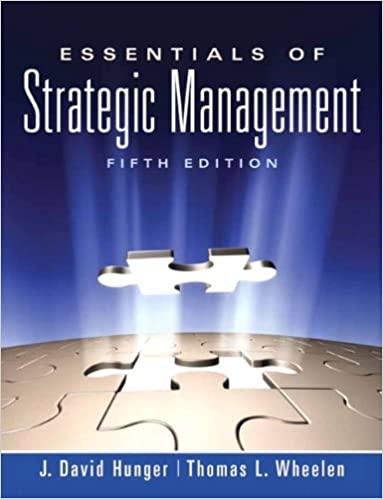Question
These questions below was posted by my professor after i submitted my assignment below. Please help me out with this questions? q1. You did not
These questions below was posted by my professor after i submitted my assignment below. Please help me out with this questions?
q1. You did not mention lightbulbs or semiconductors or the factors for them. One is low margins. There are others 92. You did not identify the factors from the article. Radical innovations often come from outside the established industry. There are others q3. You did not mention what kind of innovation the hyperloop is. You also did not mention the Falcon 9 rocket.
q4. There is no description of the diagram.
This is my assignment below.
(1) What are the characteristics of well-established products such as paper, steel, and light bulbs?
The characteristics that make a product stand out from others are known as its features and require careful management. Sizes, weight, color, quality, difficulty level, and brittleness can all be considered product qualities. The product and the requirements for its functional design will be the primary factors in determining the entire list of product features. Some aspects of development are more significant than others in their dependability, quality, and safety. Consequently, giving them a higher priority might be a good idea (Abernathy & Utterback, 1978). There is no doubt about where these products should be sold. The product's characteristics are precisely outlined and, in most cases, standardized.
In most cases, the profit margin per item sold is quite low. Modern manufacturing processes are efficient, dependent on a large amount of machinery, and highly specialized; as a result, they are uniquely suited to creating each product. In today's market, price is almost always the determining factor between otherwise comparable products. Altering even a single component of a system like this can have far-reaching repercussions on the others, which makes such transformations costly and difficult to implement.
(2) What characteristics of "radical innovation new products" require the re-orientation of corporate goals?
Companies that only engage in one kind of production seldom find themselves in the position of being the first to market with ome innovative products(Abernathy & Utterback, 1978).Each of these products is manufactured to meet the ever-increasing demand in the market. Occur at a larger rate in establishments and departments located in or near rich markets that also contain top-tier scientific institutions and other research centers. Continually deliver bigger profits per unit, a lack of homogeneity and diversity in the demands placed on performance. In the beginning, markets are not clearly defined, and the characteristics of the products are not yet regulated; achieving economies of scale is not a primary concern because product characteristics are subject to frequent change, which results in a fast change in manufacturing technology.
(3) What type of innovations are the hyper-loops and Falcon 9 rockets?
Every one of these things is an example of evolution's positive contributions. When the focus switched from radical new ideas to reducing costs and increasing productivity, successful innovativeness became essential to preserving a competitive advantage in the market(Abernathy & Utterback, 1978). For instance, when the first boron carbide repeated short and vacuum light bulb advancements were implemented, only minor adjustments were made to the bulb from 1955 to lower production costs and improve output. This was done because the first tungsten filament and vacuum light bulb breakthroughs had been implemented. The evolutionary innovation process is characterized by several distinctive characteristics, including creating a price product design, greater pricing competitiveness, and an emphasis on process innovation.
(4) Describe Exhibit one in the article
The model in Exhibit identifies successful innovation strategies by focusing on three phases in a product's process while being manufactured by a corporation. This flowing pattern illustrates the period during which the organization is most receptive to capitalizing on its advantages. At this point, operational product performance competition is the dominant force in the market, and consumer needs are the primary driver of innovation. The variety of products is rather wide, the production rate may change on the fly, and the equipment can perform many different functions. During the middle years of transitional patterns, there is typically an increase in the consumption of main products. When there is a critical mass of demand for a product or service, the rivalry is driven by tiny changes in production.
In contrast, innovations are focused on radical alterations in methods. Our product range, production system, and machinery are continuously improving around these core commodities. When a significant number of essential items and technologies are commercially successful, we can state that the item has reached full maturity. At this stage, innovators and rivals attempt to bring prices down as much as possible. The product portfolio, production line, equipment, and material have evolved into highly specialized, and optimization efforts have been made for each of these areas to decrease costs and maximize efficiency.
References
Abernathy, W. J., & Utterback, J. M. (1978). Patterns of industrial innovation.Technology review,80(7), 40-47. https://www.academia.edu/download/50444122/Abernathy1978.pdf
Step by Step Solution
There are 3 Steps involved in it
Step: 1

Get Instant Access to Expert-Tailored Solutions
See step-by-step solutions with expert insights and AI powered tools for academic success
Step: 2

Step: 3

Ace Your Homework with AI
Get the answers you need in no time with our AI-driven, step-by-step assistance
Get Started


